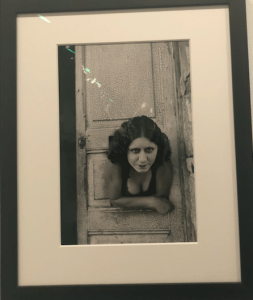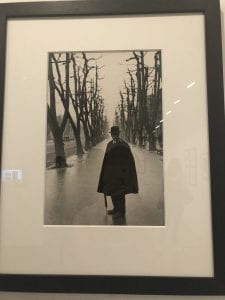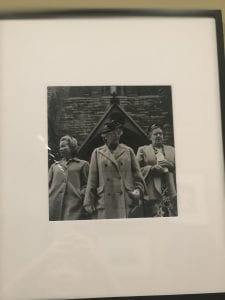I chose this photograph by Henri Cartier-Bresson titled “Prostitute”. The reason for choosing this specific photo is because I loved the composition of it, and how the prostitute’s hair and shirt contrasted the white doorway. I also really thought it was interesting how she was staring the viewer right in the eyes with her cleavage pushed out to show how she was indeed a prostitute without having to read the title of this photograph. The way this photo was composed was also what I found most appealing with her slightly off center in the lower right corner and how she fits through the hole in the doorway to not let us inside, but only her.
The second photograph I chose to write about was also taken by Henri Cartier-Bresson and was titled “Marseille”. I was immediately drawn to this composition because of the leading lines of the trees leading into the haize and the dark classic bowler hat man in between the line of trees. Bresson mastered the contrast of the white sky and sidewalk with the dark figured trees and man to balance out the photograph. The point of focus is once again not completely centered and is slightly shifted to the right and my eyes were pulled directly to the man because of the natural framing of the trees and sidewalk. Bresson also was able to really capture the character that this man had with his white mustache and pipe making the observer question who he was and what he did.
The last photograph I chose was titled “outside Presbyterian church on sixth avenue” taken by Elliot Erwitt. I was intrigued by this photo because of its angle from below giving these old ladies a more powerful look, which I thought was funny since they were just old ladies coming out from church. I also observed how Erwitt used the odd number rule to draw the viewer’s attention to the middle old lady and how he framed this photo so that she is right below the point of the church. Erwitt also uses triangles throughout his photo with the church itself in the background and each lady creating their own triangles as well. I also noticed and liked how Erwitt contrasted the church’s dark building to the light colors of the ladies in the foreground. I also like how he used a shallow depth of field to pull the viewer’s eye even more to the ladies and blurred out the background a bit.


